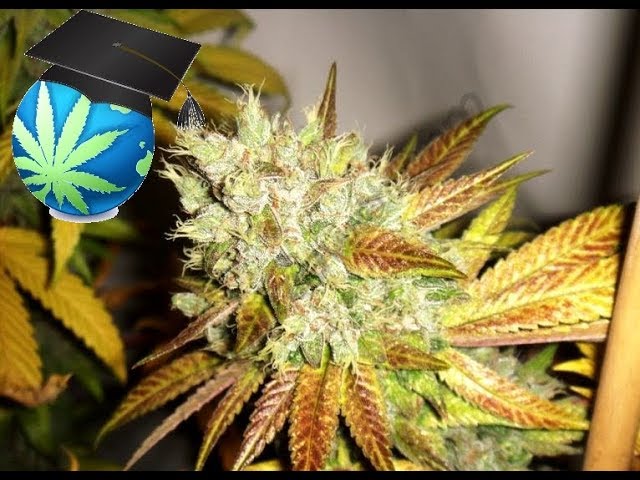1. Understanding Heat and Cold Stress in Cannabis Plants
Heat stress and cold stress are two critical factors that significantly affect the growth and health of cannabis plants. Understanding these types of stresses is essential for any grower looking to optimize their harvest.
Heat stress occurs when temperatures exceed the optimal growth range, while cold stress occurs when temperatures drop below acceptable levels. Both conditions can lead to reduced yield and compromised plant health.
Symptoms of Heat Stress
- Wilted leaves
- Leaves that curve upwards
- Discoloration or yellowing of the leaves
- Early flowering and premature bud development
Symptoms of Cold Stress
- Slow growth or stunted plants
- Discoloration of leaves, often turning purple or dark
- Increased vulnerability to pests and diseases
- Falling leaves in extreme cases
To manage heat stress, growers should consider techniques such as proper ventilation, shading plants, and maintaining appropriate humidity levels.
On the other hand, to combat cold stress, it is essential to provide adequate insulation and consider the use of thermal blankets or greenhouses to maintain optimal temperature conditions.
Recognizing the signs of both types of stress allows growers to implement corrective measures quickly, ensuring healthier plants and better yields.
2. Key Signs of Heat Stress in Cannabis: What to Look For
Identifying signs of heat stress in cannabis plants is crucial to maintaining their health and maximizing production. Heat stress can significantly affect yield and crop quality. Below are some of the most common manifestations that indicate that your plants are suffering from this type of stress.
1. Wilted leaves
A clear sign that your plants are exposed to excessive temperatures is wilted leaves. Instead of looking firm and upright, the leaves can become soft and droopy, which is a result of water loss from excessive perspiration.
2. Yellowing
- Yellow leaves: The leaves may begin to yellow, especially the older ones, signaling that the plant is in a state of stress.
- Brown spots: Brown spots appear on the leaves, indicating damage to the cells due to elevated temperatures.
3. Reduced growth
Another manifestation of heat stress is stagnant growth. Plants may show a delay in their development, producing fewer leaves and buds, as the plant redirects its energy to survive adverse conditions.
It is important to pay attention to these signs so that you can apply quick and effective solutions that help your plants recover and continue to grow healthy and robust.
3. Identifying Cold Stress Symptoms in Your Cannabis Grow
Identifying the symptoms of cold stress in your cannabis crops is crucial to ensuring a healthy harvest. Cannabis plants are particularly sensitive to temperature variations, and extreme cold can have a significant negative impact on their development. Knowing the signs of heat stress will allow you to take appropriate preventive and corrective measures.
Main symptoms of cold stress
- Leaf discoloration: The leaves can turn yellow or purple, especially in more sensitive cannabis strains.
- Fallen or rolled blade: The leaves may begin to droop or curl inward, indicating discomfort in the plant.
- H slow growth: If you notice that your plants aren’t growing as they should, this may be a sign that they’re experiencing cold stress.
In addition, it is important to pay attention to flowering and trichome production. A decrease in the number of trichomes can be another wake-up call about weather conditions. Cold stress can also affect the quality and potency of the final product, so constant vigilance is essential to maintain plant health during periods of intense cold.
4. Advanced Temperature Management Techniques for Healthy Cannabis Plants
Proper temperature management is essential for the optimal growth and development of cannabis plants. Extreme fluctuations can negatively affect photosynthesis and the overall health of plants. Therefore, it is essential to adopt advanced techniques to maintain ideal temperature levels throughout the growing cycle.
1. Temperature Monitoring and Control
Using real-time monitoring systems is crucial to keeping the temperature at ideal levels. Some advanced devices allow the integration of temperature sensors and connectivity to mobile applications, making it easier to monitor and adjust conditions in the crop. This allows you to respond quickly to temperature changes and avoid stress on the plants.
2. Cooling and Heating Systems
Implementing a proper heating and cooling system is vital, especially in extreme climates. They can be used:
- Air conditioners to control heat in hot environments.
- Electric heaters in spaces where temperatures drop too low.
- Ventilation systems to allow air circulation and renewal.
3. Placement Strategies and Crop Design
The layout of plants and equipment also plays a crucial role. Placing light sources at the right distance can prevent overheating of plants. In addition, the use of reflective umbrellas can also help regulate temperature, optimizing light without compromising plant health.
5. Best Practices for Preventing Heat and Cold Stress in Cannabis Cultivation
Temperature is a critical factor in cannabis cultivation, as it directly influences plant growth and health. Heat stress, whether from heat or cold, can compromise cannabinoid production and the overall quality of flowers. Here are some of the best practices to prevent heat stress in your crops:
Control of the environment
- Optimizes ventilation: Make sure your greenhouse or grow room has a proper ventilation system. This will help regulate temperature and humidity.
- Use fans: Strategically placing fans can help with air circulation and avoid hot spots in the grow space.
Irrigation adjustments
- Proper watering: During periods of extreme heat, increase the frequency of watering, as plants can lose water quickly and suffer from dehydration.
- Proper cold weather irrigation planning: Avoid watering in the coldest hours of the day to prevent the roots from freezing.
By implementing these effective practices in your cannabis grow, you can minimize the risk of heat stress, ensuring a healthy and productive harvest. Remember that constant attention to the weather conditions and the specific needs of your plants is essential for a successful crop.


